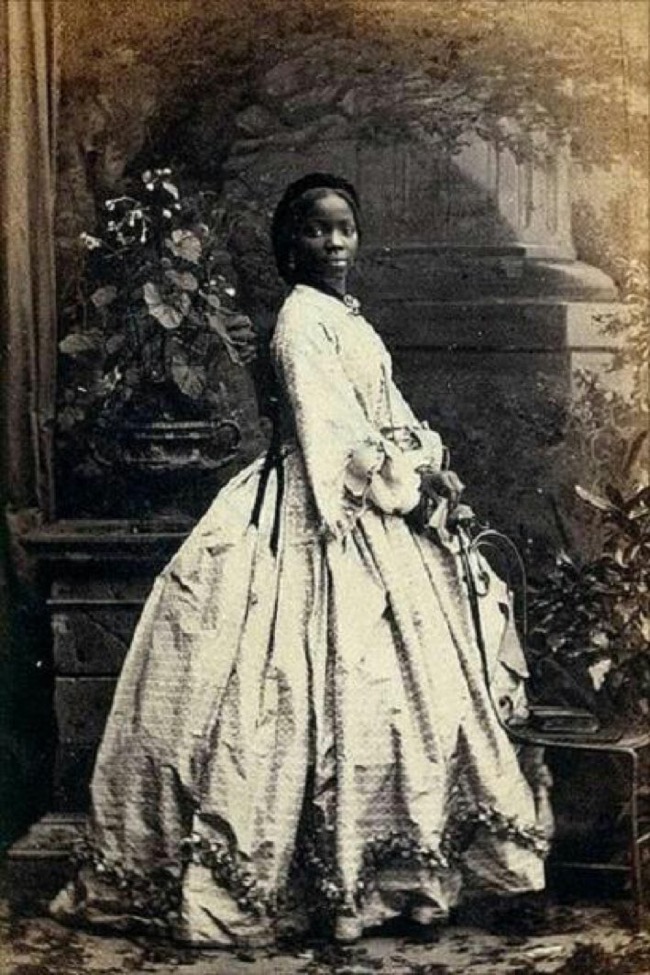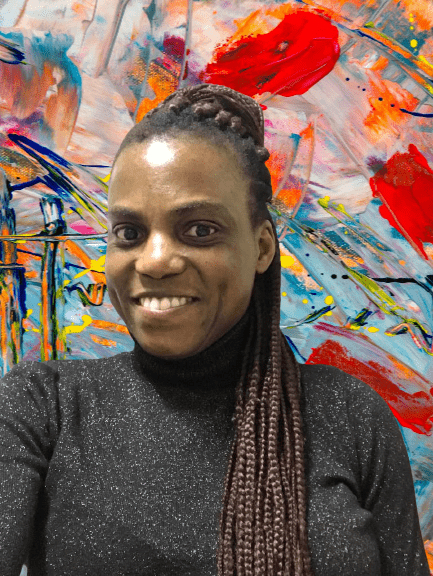A Unique And Admired Figure In History, She Spent Her Life Between The British Royal Household And Her Homeland In Africa.
Sarah Forbes Bonetta Davies, a West African Yoruba girl, was captured by the King of Dahomey in 1848 during a “slave-hunt” war in which her parents were killed. In 1850, when she was around eight years old, she was rescued by Captain Frederick E Forbes of the Royal Navy whilst he was visiting Dahomey as an emissary of the British Government. Forbes convinced King Ghezo of Dahomey to give Sarah to Queen Victoria saying: “She would be a present from the King of the Blacks to the Queen of the Whites.” The young girl was subsequently given the name Forbes as well as that of his ship, the ‘Bonetta’.
She returned to England with Forbes who presented her to Queen Victoria, who in turn gave her over to the Church Missionary Society to be educated. Sarah suffered from fragile health and in 1851 she returned to Africa to attend the Female Institution in Freetown, Sierra Leone. When she was 12 years old, Queen Victoria commanded that Sarah return to England, where she was placed under the charge of Mr. and Mrs. Schon at Chatham.

Queen Victoria was so impressed by the girl’s natural regal manner and her gift for academic studies, Literature, Art, and Music that she gave her an allowance for her welfare and Sarah became a regular visitor to Windsor Castle. Sarah’s genius became admired throughout the royal court and she continued to outshine her tutors with her advanced abilities in all studies. At the age of 18, Sarah received a proposal from James Pinson Labulo Davies, a 31-year-old Yoruba businessman of considerable wealth who was living in Britain. She initially refused his proposal and it is reported that in order to persuade her to accept Sarah was sent to live with two elderly ladies in Brighton whose house she described as a “desolate little pigsty”.
Queen Victoria sanctioned Sarah to be married in St Nicholas Church in Brighton in August 1862. The wedding party, which arrived from West Hill Lodge, Brighton in ten carriages and pairs of grays, was made up of “White ladies with African gentlemen, and African ladies with White gentlemen” There were sixteen bridesmaids. The newlyweds moved back to West Africa and Sarah was baptized at a church in the town of Badagry, a former slave port. They settled in Lagos where her husband became a member of the Legislative Council from 1872-to 74 (in which year Lagos Colony was for a time amalgamated into the Gold Coast).
Shortly after her marriage, Sarah gave birth to a daughter and was granted permission by the Queen to name the child Victoria – the Queen also became her Godmother. Sarah visited the Queen in 1867 with her daughter then returned to Lagos and had two more children. Later, upon Sarah’s death the Queen wrote in her diary: “Saw poor Victoria Davies, my black godchild, who learned this morning of the death of her dear mother”. So proud was Queen Victoria of Sarah’s daughter, that when she passed her music examination, teachers and children had one day’s holiday. Throughout her life, Sarah had a long-lasting cough that was caused by the climate change between Africa and Britain. In 1880, suffering from tuberculosis, she went to convalesce in Madeira off the coast of West Africa. She died, around the age of 40, in 1880 and was buried in Funchal, Madiera.
Her daughter Victoria was given an annuity by the Queen and she continued to visit the royal household throughout her life. In his journal, Captain Forbes gave an account of his mission in relation to Miss Bonetta. “I have only to add a few particulars about my extraordinary present The African child”. In a former portion of this journal I have mentioned the Okeadon war; one of the captives of this dreadful slave hunt was this interesting girl.
It is usual to reserve the best born for the high behest of royalty and the immolation on the tombs of the diseased nobility. For one of these ends she had been detained at court for two years: proving, by her not having been sold to a slave dealer, that she was of a good family.
So extraordinary a present would have been at least a burden, had I not the conviction that, in consideration of the nature of the service I had performed, the government would consider her as the property of the crown.
To refuse would have been to have signed her death warrant which, probably, would have been carried into execution forthwith. Immediately on arriving…
Of her own history, she was only a confused idea. Her parents were decapitated; her brother and sisters she knows not what their fate might have been.
Her age is supposed to be eight years. She is a perfect genius; she now speaks English well and has a great talent for music. She has won the affections, with but few exceptions, of all who have known her, she is far in advance of any white child of her age, in aptness of learning, and strength of mind and affection.”
Sarah Forbes Bonetta Davies, a West African Yoruba girl, was captured by the King of Dahomey in 1848 at the age of 8, during a “slave-hunt” war in which her parents were killed. She was presented to Queen Victoria as a “gift” from one royal family to another.
Blackhistorymonth.org

An Entrepreneur , B.A Foreign Languages ,PGD Health and Social care Management ,American Caregiver Association (Member) ACA Certified, Leadership and Management.